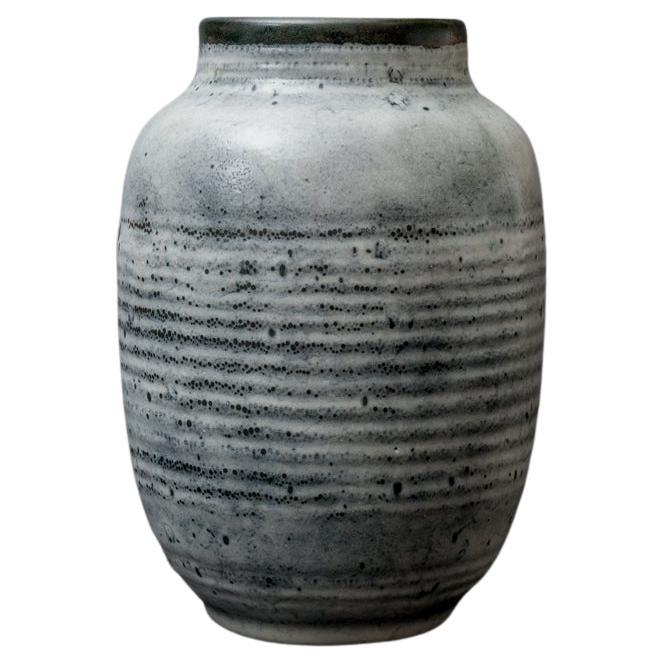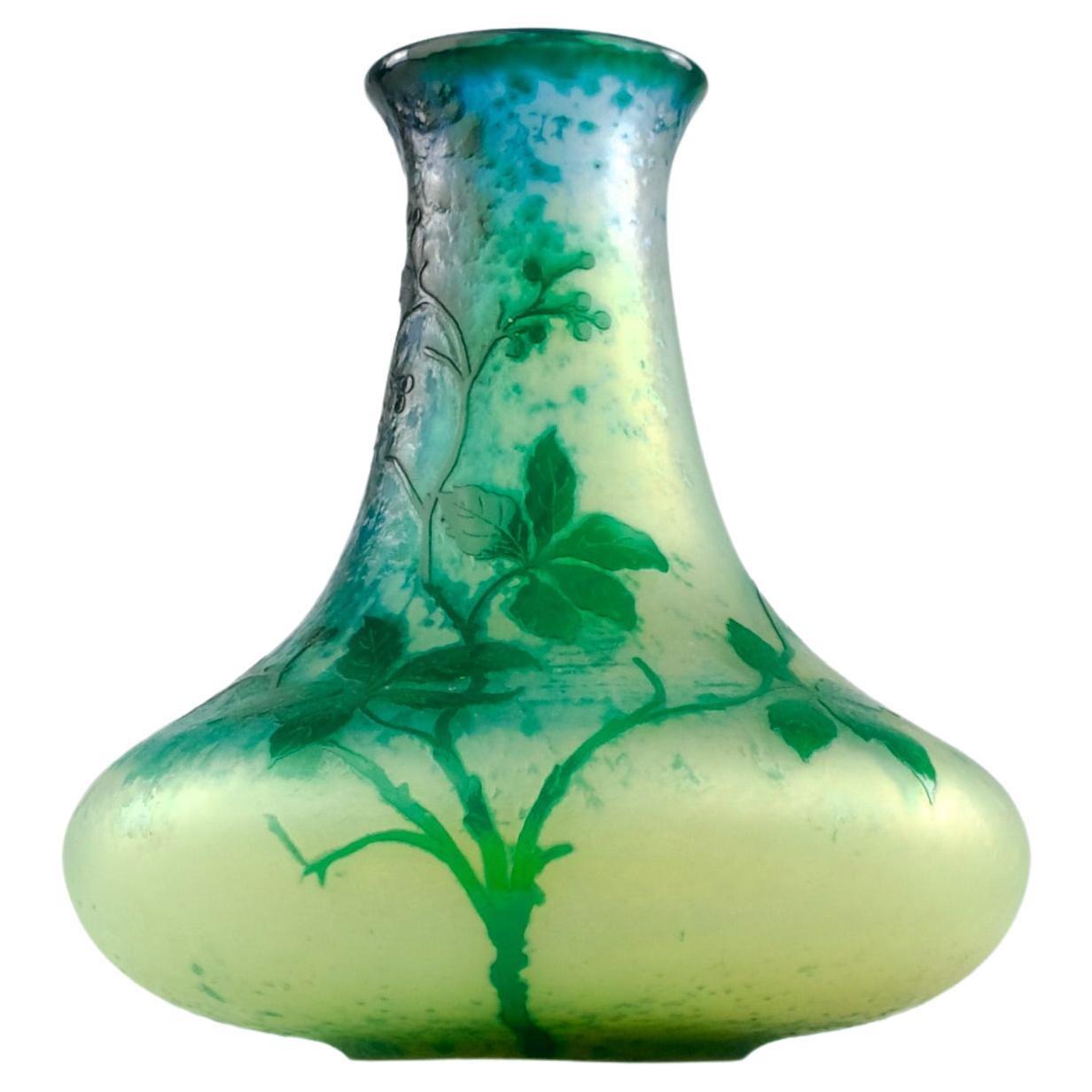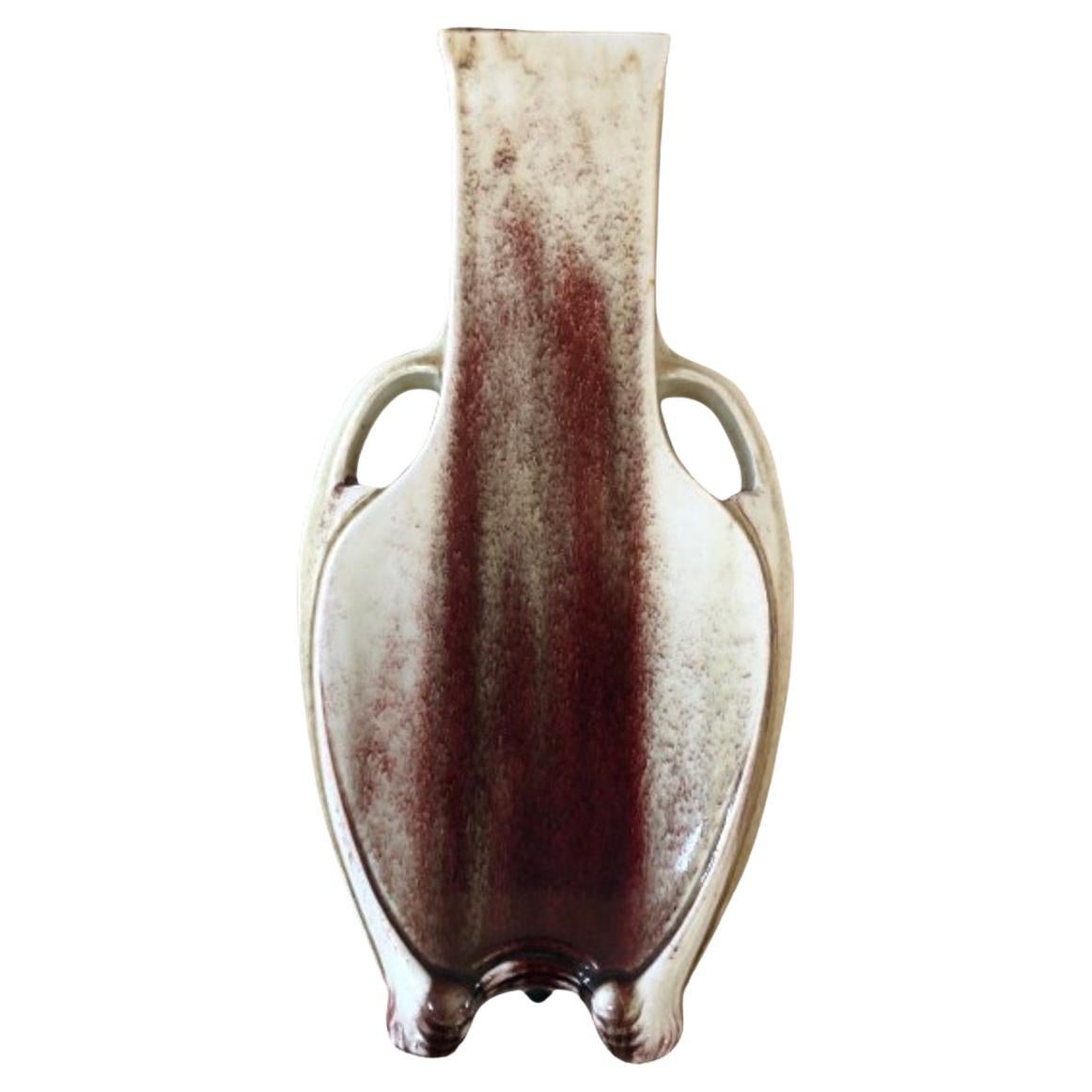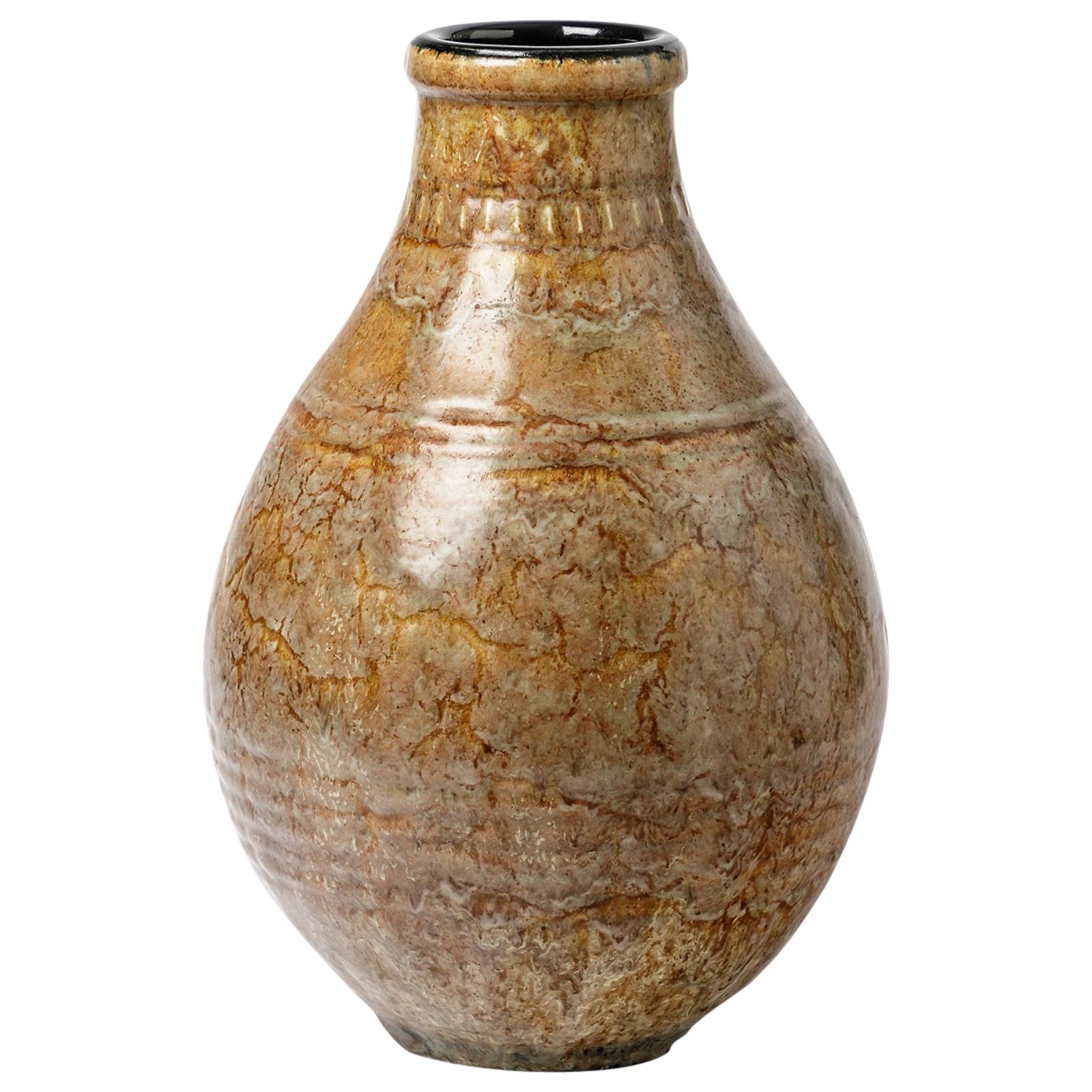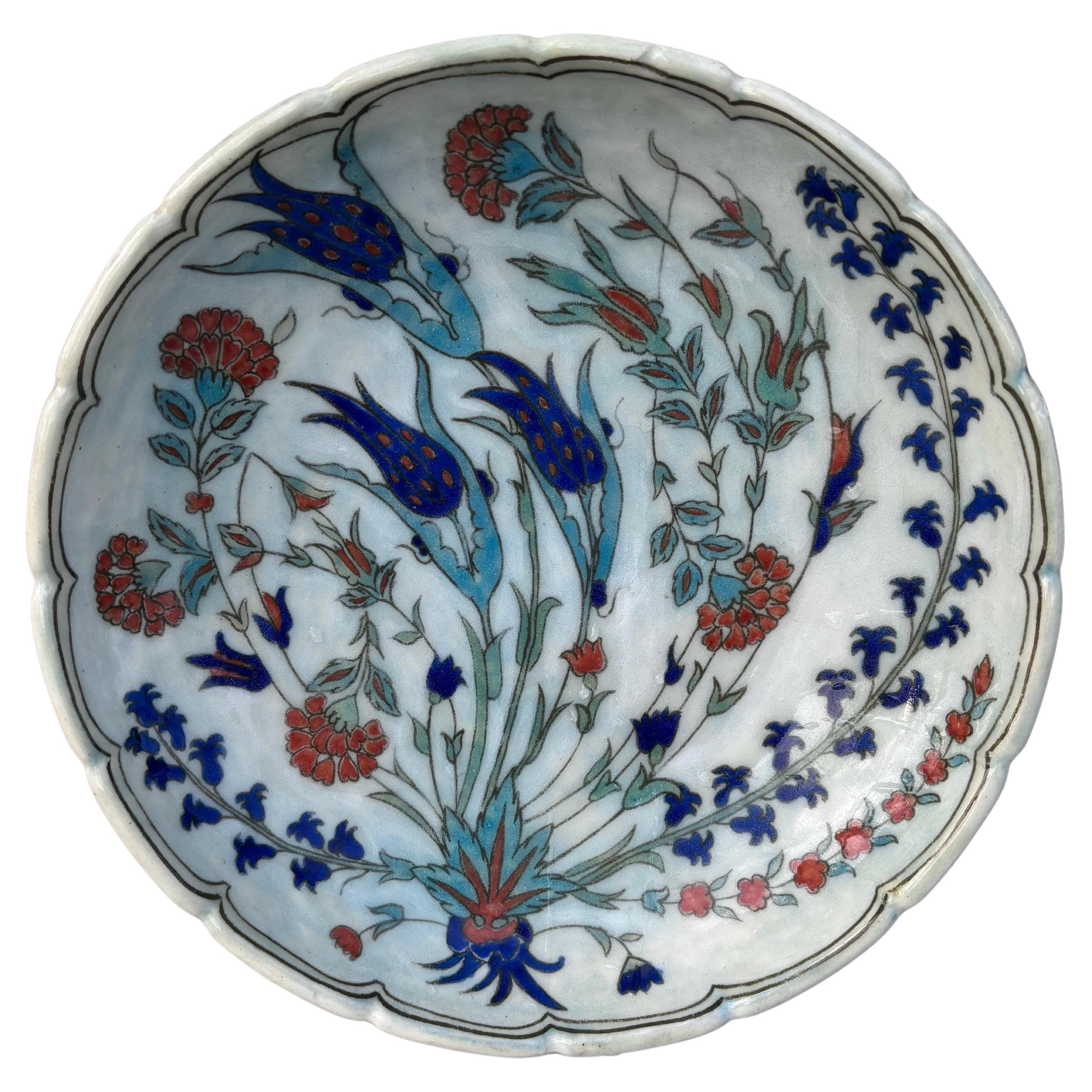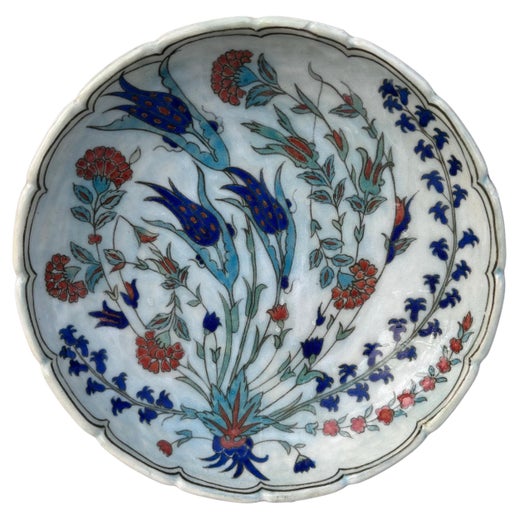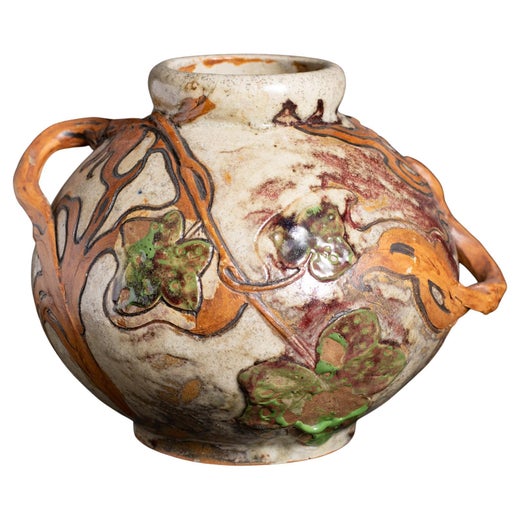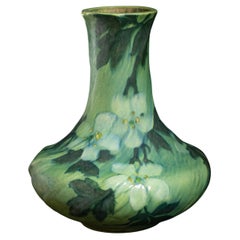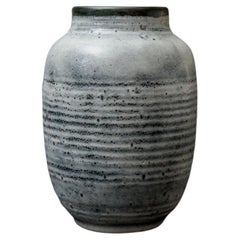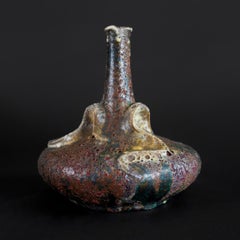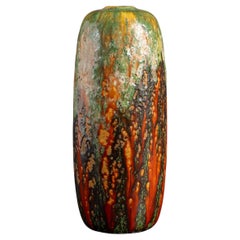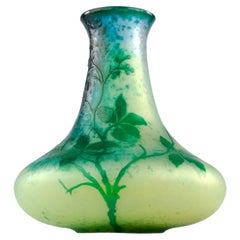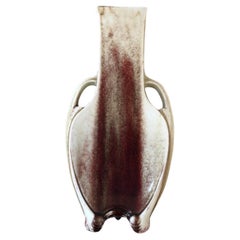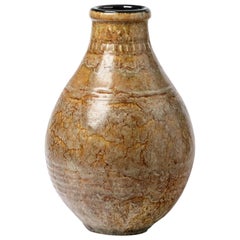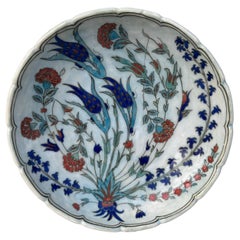Art Nouveau Stoneware Vitis Vase by Edmond Lachenal and Émile Decoeur
About the Item
- Creator:Émile Decoeur (Artist),Edmond Lachenal (Artist)
- Dimensions:Height: 7.75 in (19.69 cm)Width: 9.75 in (24.77 cm)Depth: 9.75 in (24.77 cm)
- Style:Art Nouveau (Of the Period)
- Materials and Techniques:Stoneware,Glazed
- Place of Origin:
- Period:1900-1909
- Date of Manufacture:ca 1902
- Condition:Featured in the book "Emile Decoeur: 1876-1953" pg 31.
- Seller Location:Chicago, US
- Reference Number:1stDibs: LU7300234635112
Edmond Lachenal
One of France’s most influential ceramists, Edmond Lachenal contributed significantly to the development of Art Nouveau. His poor beginnings in Paris led to an apprenticeship at age 12 with a local potter. In 1870, he began working in the studio of the leading ceramist, Theodore Deck.
Lachenal was a quick study and by 1873, he had demonstrated considerable talent to be appointed Director of Decoration in Deck’s studio as well as receiving an Honorable Mention at the World’s Fair in Vienna.
By 1881 Lachenal had opened his studio with his wife and fellow ceramist, Anne Le Cloarec, in Paris Auteuil neighborhood where there was a high concentration of ceramic production and artistic exchange. He subsequently moved his studio production outside of Paris; however, his impact on the artistic capital only increased with time. He won gold medals there in 1889 and 1900 at the Expositions Universelle.
By the early-1900s, large exhibitions of his work were held at the Österreichisches Museum fur Angewandte Kunst in Vienna and Munich and Louis Majerelle’s new Paris showrooms at the former site of Bing’s Maison de l’Art Nouveau. It was his breadth and range that set him apart from other contemporary artists working in the field. He worked in faience and stoneware, and he collaborated with sculptors to produce ceramic versions of their work. His oeuvre included applied experimental decorative ceramic styles as well as masterful sculpted organic models which reflected the evolving trend of Japonisme.
Lachenal’s creative solutions of utilizing hydrofluoric acid to remove the outer layer of glazes to create a velvety matte finish became his hallmark email mat veloute. As a harbinger and master of the Art Nouveau style, Lachenal’s ceramic work moved french ceramics from an appreciative replication of the natural world influenced by the arts from Japan to a fully actualized aesthetic in which artistic process and form expressed these higher laws found in nature. Lachenal leaves an incredible legacy.
Find Edmond Lachenal vases and other decorative objects on 1stDibs.
(Biography provided by Galerie Fledermaus)
Émile Decoeur
The disciple of Edmond Lachenal, Émile Decoeur emerged as a leader in 20th-century ceramics. Decoeur began his long apprenticeship with the master in 1890 until he formally set up his own studio in 1903 in Paris’ ceramics hub, the Auteuil district.
Joining forces with fellow ceramist, Fernand Rumebe, they added a small gallery called L’Art Ceramique. 1908 proved to be the real turning point in DeCoeur’s career. He married and moved his studio permanently to the town of Fontenay-aux-Roses south of Paris.
Rouard, the owner of the prestigious Parisian retailer of fine furnishings on Avenue de l’Opera, A la Paix, became the promoter and agent for DeCoeur’s work for decades. That year also marks the beginning of a lifelong friendship with art collector, Atherton Curtis, whose patronage enabled DeCoeur’s artistic independence.
The honing of expertise in every aspect of production and drive for experimentation which Lachenal nurtured in his workshop continued to expand for all of Decoeur’s life. Decoeur was the first to show the potential for engobe application with stoneware. He shifted from early work in faience to his preferred stoneware and porcelain mediums where he could continuously refine the unity of ceramic base and glaze. He was made a Chevalier in 1920 and elevated to Officier in 1926 of the French Legion of Honor.
From 1914 until the eve of WWII, Decoeur was truly the heart of Rouard’s artists who exhibited under the name, Les Artisans Francais Contemporains. He served on the selection committee and on the jury of the first international exhibition devoted exclusively to the decorative arts, l’Exposition des Arts Decoratifs, where the Art Deco style was born.
A favorite of Émile Jacques-Ruhlmann, Decoeur found inspiration in ancient Chinese and Korean ceramics and strove for a purity of style and form; his work in the second quarter of the 20th century continues to evolve with a demonstrably more sober approach. Decoeur served as Artistic Advisor to Sèvres Manufactory from 1939–48, continuing his quest in the world of ceramics in his later years at his studio until his dying day.
Besides the many museum purchases made during Decoeur’s lifetime, Curtis’ donation of the bulk of his 500-piece Decoeur collection to the Musee Nationale d’Art Moderne in 1938 has ensured the preservation and eminence of this 20th-century master.
Find Émile Decoeur ceramics for sale on 1stDibs.
(Biography provided by Galerie Fledermaus)
- ShippingRetrieving quote...Shipping from: Chicago, US
- Return Policy
More From This Seller
View AllAntique 1890s French Art Nouveau Vases
Earthenware
Vintage 1930s French Art Deco Vases
Stoneware
Antique 1890s French Art Nouveau Vases
Stoneware
Antique 1890s French Art Nouveau Vases
Stoneware
Antique 1890s French Art Nouveau Vases
Stoneware
Antique 1880s French Art Nouveau Vases
Stoneware
You May Also Like
Antique Late 19th Century French Art Nouveau Vases
Glass
Early 20th Century French Art Deco Vases
Ceramic
20th Century French Art Deco Vases
Ceramic
Vintage 1930s French Art Deco Vases
Ceramic, Faience, Pottery
Vintage 1930s French Art Deco Vases
Ceramic, Faience, Pottery
Vintage 1930s French Art Deco Vases
Pottery

